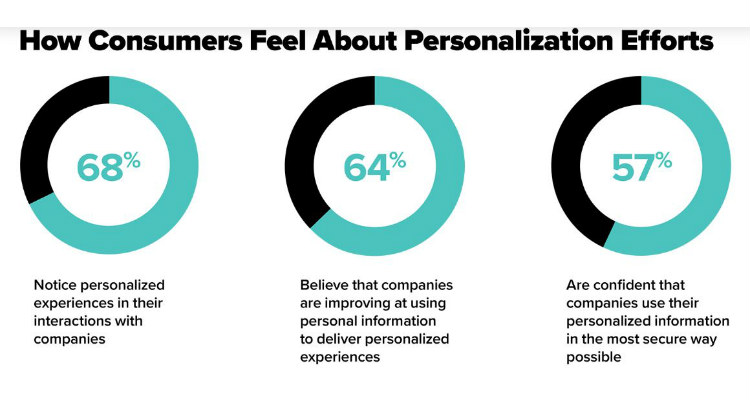2020 started with a life-changing pandemic outbreak that has disrupted the way we lived. Coronavirus has locked us down and forced us to work from home. At such times, businesses are taking drastic measures to stay relevant too. Virtual meetings, remote working, and innovative ways to remain accessible to their customers and clients have become their lifelines.
Here, we will discuss a few SEO and content marketing trends that can help you remain at the top of the game in 2020:

1. Use SEO to Create Intent-Centric Content.
Search Engine Optimization (SEO) has always been at the center of online content creation. But the way SEO is used is changing. Now, marketers not merely use business keywords to create content but to dig deeper and find the search intent of the users looking for your content.
For example, every new parent may search for a crib. But you may offer ‘best cribs for twins’ that suit the needs of twins’ parents better. Using this keyword and building your content around it may get you less traffic but it will be more qualified. The conversion rate for such leads will be better.
To understand the search intent of the users, we need to look at their landscape queries and try to find a pattern in them. Nouns, verbs, adjectives, and adverbs they use frequently may give us insight into what users are looking for. These query patterns may uncover trends and search behavior nuances that SEO experts can use skillfully and create detailed topics and subtopics that are of interest.
Some of the ways how SEO experts find out the motivation behind the searches are:
- Keywords insights in which they club together related keywords to try and figure out the users’ search intent, and
- Long-tail queries that can point out the critical needs and pain-points of users.
Once the experts figure out the motivating factors for different users, they can then develop actionable content for them. Such content helps shoppers feel confident that your product or service will fix their problems or solve their issues.

2. Create Content for Voice Search.
The podcast trend is growing. Last year, more than 50% of Americans listened to podcasts. It is predicted that by next year, the podcasting market in the US will hit $1 billion. Voice search on Google is already popular. The audience on Spotify, iTunes, Overcast, and Anchor is growing every day. Digital voice assistants like Alexa, Siri, and Google Home are increasingly becoming more popular in demand. It is predicted that by 2023, 30% of searches will voice-based. In such a scenario, businesses cannot ignore voice optimization anymore.
The SEO Tribunal says:
- 40% of Internet users make use of voice search daily.
- 39.3% of people using voice searches are millennials.
- 20-25% of mobile search queries are done by voice.
- 52.8% of users use voice search facility when they are commuting.
Content tailored for voice search has to be written in natural language. It needs to be simple and direct, devoid of glitz and glamor. It should have full conversational sentences with long-tail keywords in titles and meta descriptions. As the voice search grows, SEO marketing strategy will have to focus more on content written in a conversational tone.
3. Interactive Content is Growing.
Static content has traditionally served the purpose of informing buyers. Now, 93% of marketers agree that it is time to move on to the content that can engage the audience emotionally and intellectually – even when it comes to educating the buyers. No wonder, we saw a rise of 33% in interactive posts last year.
SEO experts are increasingly using content creation tools like:
- online polls,
- quizzes,
- online contests,
- virtual games,
- interactive assessments,
- configurators (such as design systems or choice boards),
- interactive infographics, eBooks, lookbooks, white papers, and wizards, and
- calculators
to produce quick interactive content to engage their readers.
Interactive content on landing pages, blogs, microsites, and social media platforms is already popular. Recently, the VR (Virtual Reality) and AR (Augmented Reality) traffic is winning audiences all over the world. Just look at the Google AR search feature to know more about it.
Interactive content creation allows digital marketers to repurpose their passive content and create reusable content that can attract readers repeatedly.
The key to success while creating interactive content is to generate excitement or establish a connection with your audience. After all, you need to hold their attention long enough to get across your message or inspire them to take the desired action.

4. Hyper-Dynamic Content is the Key to Personalization.
Each one of us is different. We have different personalities, different interests, different preferences, and different opinions. Magazines, newspapers, radio channels, and television put forth media and it was up to readers and the audience to choose what they wanted to consume. Now, with the proliferation of information at such a massive scale, personalization of information is gaining importance. It means that your users will only see things they are looking for and want to know about.
You may also choose your consumers according to their geographic locations, socio-economic status, job titles, gender, or common interests they may have – and serve them content which is more appealing to them. The most common uses of hyper-dynamic content are:
- Field mergers used in email campaigns, landing pages, or letters where your name pops up to provide the personal touch to the content
- Dynamic content can also be integrated into websites or emails according to established criteria. These may include different types of images, buttons, calls-to-action, or links configured to pre-established rules.
- Targeted content for different personas
- Specific content at different stages of the campaign or the sales cycle
Dynamic content not only allows you to choose images, charts, statistics, and quotes different types of consumers will see but also allows you to configure the latest layouts and real-time information in the content they receive. SEO optimized widgets can be quickly integrated with important customer touchpoints, such as chatbots, mobile apps, and eCommerce sites to enrich the customers’ experience and help them make decisions better.

5. Video Content is in Demand.
85% of all Internet users in the US watched online videos every month. Globally, online video content has a penetration of 90 percent! In June 2019, Google Sites had 126 million unique viewers. It is expected that by 2022, the United States alone is expected to have 248.9 million online video viewers.
Studies show that video content is not only limited to entertainment anymore. About 54% of consumers want to see more videos from brands or businesses. People watch video content for a long time ensuring better engagement with the audience.
Industry influencers are also producing different types of video content proactively to grab the attention of the audience. These include:
- Explainer videos, which are short videos that explain various products and services,
- Video Ads
- Vlogs (Video blogs)
- Video Interviews, Presentations, and Tutorials
- Video Product Demos, Product Reviews, and Testimonials
Live streaming of virtual events (with a live chat feature to make them more interactive) and webinars are also popular types of video content that should be included in your digital marketing strategy in 2020.
Instagram is a fast-growing social media platform that is riding high on its video content. Even two years ago, in 2018, 88% of video marketers believed that online videos on social media offer the best ROI (return on investment). They also got 66% more qualified leads per year and achieved a 54% increase in their brand awareness. As many as 93% of marketers were able to attract new customers with the help of videos they landed on various social media platforms.
A 2018 survey by Wyzowl also shows that about eight out of every ten users bought an app or software after watching the video for it.
6. Deadweight Pages or Content are Not a Worry Anymore.
Google’s John Mueller shared a common mistake digital publishers make. Many of them think that removing non-performing web pages from their site will help their other pages to perform better. John advises that one should not do it blindly. If you are just going by the number of impressions for a search page, there are high chances that you may drop useful pages useful but the issue they address is not common.
He advises that before you remove a page, you need to determine why it is not performing. Some pages do not perform well because not many people are looking for that particular keyword phrase. For example, archived versions of a page may come in handy when you are looking for instructions to repair a product or when you are looking for its historical information. In such cases, simply updating the page may render them useful.
For example, if you have discontinued a product and launched a new one, you may keep the page of the old product to announce that it has been discontinued and redirect the audience to the page of the better product.
Similarly, it is a good idea to analyze your informational content and see if it has become obsolete. You can then decide whether to remove it from your site or improve it.
Mueller pointed out that it is not necessary that removing non-performing content from your site will help the page ranking of other web pages. It may be helpful in the case of a very large site where it becomes easier for Google to crawl other pages of the site but usually, it doesn’t make much of a difference if you drop a few pages.

7. Reduce Your Page Load Time.
Google shared that if a page takes 3 seconds or more to load, users get annoyed and leave. Hence, it heavily penalizes pages that are slow to load. Improving page load time is an important SEO tactic these days. It involves:
- analyzing the page load times of your website with the help of tools like Google’s PageSpeed developer tool or Web Page Test,
- compressing the files and images you put forth on the web page,
- enabling browser caching by placing your CSS and JavaScript in external files,
- pushing stylesheet references to the top or <head> of your HTML document (which is the W3C standard) and script references at the bottom of the page just before the closing </body> tag,
- fixing on-page SEO,
- avoid 301 redirects, and
- decreasing HTTP requests by using CSS sprites to combine multiple images.
Optimizing your page load time is more relevant now as speed is of the essence in today’s digital age. Innovative developer tools and practices can help you achieve this with ease.
8. Local SEO Cannot Be Ignored Anymore.
Earlier, experts thought that local SEO is more effective for small businesses targeting local clients. Now, with the Coronavirus lockdown and restrictions on traveling, more and more businesses need to pay attention to local SEO.

Three major local search ranking factors are:
- Creating a Google My Business listing based on its:
- categories,
- proximity,
- use of business keywords in the title, etc.
- Creating Link signals based on its:
- linking domain quantity and authority,
- inbound anchor text, etc.
- Asking users to write reviews of your products or services. Quantity, velocity, and diversity of reviews help with your local SEO.
Creating local listings, local pages, and optimized content for local keywords are some of the local SEO methods trending these days. The name, address and phone number of your business must remain consistent across the platforms, including local press and media.
Google’s algorithm keeps evolving. There’s no sure-shot way of doing SEO correctly. Hence, A/B testing should always be at the core of your content marketing strategy. Test a method, analyze how well it worked (or not), and then decide whether to implement it for the rest of the pages or not.
A/B testing is not new but it can sure help you determine which SEO techniques get you more customers or best conversion rates. With the rapidly changing digital scenario, it has become indispensable. Keep innovating and keep monitoring how well your SEO practices are performing before you scale them up.
Author’s Bio- Lucy Miranda is a writer and editor at GoDissertationHelp, that provides Dissertation Writing Services. She is devoted to her family, work and friends. She is a News Enthusiast and a Bookworm. She loves Swimming and dancing too. She is interested in educational, marketing and blogging issues. Feel free to connect with her on Twitter.


